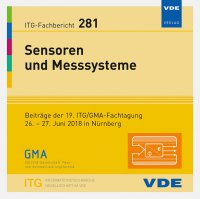Experimental set-up for dynamic material investigation at high temperatures
Conference: Sensoren und Messsysteme - 19. ITG/GMA-Fachtagung
06/26/2018 - 06/27/2018 at Nürnberg, Deutschland
Proceedings: Sensoren und Messsysteme
Pages: 4Language: englishTyp: PDF
Personal VDE Members are entitled to a 10% discount on this title
Authors:
Hartmann, J.; Stark, T.; Knopp, K.; Zaenglein, M. (University of Applied Science Würzburg-Schweinfurt, Ignaz-Schön-Str. 11, 97421, Schweinfurt, Germany)
Manara, J.; Zipf, M. (Bavarian Center for Applied Energy Research (ZAE Bayern), Magdalene-Schoch-Str. 3, 97070, Würzburg, Germany)
Schreiber, E. (KE-Technologie GmbH, Pfaffenwaldring 31, 70569 Stuttgart, Germany)
Schmidt, F. (Techno Team Bildverarbeitung GmbH, Werner-von-Siemens-Str. 5, 98693 Illmenau, Germany)
Brunner, M. (Netzsch Gerätebau GmbH, Wittelsbacherstr. 42, 95100 Selb, Germany)
Mueller, M. (Rauschert-Heinersdorf-Pressig GmbH, Bahnhofstr. 1, 96332 Pressig, Germany)
Abstract:
Energy efficiency and operation safety in energy conversion, process technology, and aerospace engineering requires advanced material investigation, in particular at high temperatures to characterize the materials and components. Additionally, modern additive manufacturing methods, in particular the 3D metal laser printer requires a detailed control of the melting temperature. Many applications are based on a layered structures, e.g. thermal barrier coatings in gas turbines. Also components manufactured by additive manufacturing pose a layered structure. In these structures the mechanical contact between the layers and to the substrate is of high interest. Besides, the complete characterisation of the additive manufactured component is important for its later application. To cope with these new demands, the University of Applied Sciences Würzburg – Schweinfurt (FHWS) and the Bavarian Center for Applied Energy Research (ZAE) together with the companies, Netzsch Gerätebau, KE Technologie, TechnoTeam Bildverarbeitung and Rauscher-Heinersdorf-Pressig joined their efforts to develop a measurement for material investigation for thermophysical material properties of inhomogeneous systems at high temperatures based on the well-known laser flash method. By implementing additional time variable heating sources for heating the layered systems combined with additional point like and 2D temperature measurement for the thermal spreading an innovative system will be developed, in particular for high temperatures. By varying the wavelength of the optical heating and detection, additional by changing the time evolution of the heating, opto-thermal parameters can be sensed with high spatial resolution. Additionally other material parameters, like thermal contact, electrical conductivity and optical data might be measured with this set-up.


